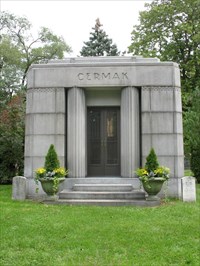BY: JAMES F. O’NEIL
“I think I have serious latent Catholic guilt issues.” –Grimes (Brainyquote)
A grey rainy late winter day in Chicago. My dad and my sister are in the car (our ’37 Plymouth) waiting to pick me up from school. I was in 2nd grade at St. Jarlath’s, near our apartment on Van Buren and Ashland (long gone now, concretized by the Congress Street-Eisenhower Expressway). My dad worked nights but came to get us home for lunch in bad weather. What was the delay? I’m inside the classroom, sitting under the teacher’s desk. What was happening then in 1949?
Born in April 1941, I have few memories before 1944, though some child development specialists have told they could unlock the drawers holding those before-memories. How many “major” memories do we get to keep? Memories are the captured ones, say, the ones not ever forgotten, those “memorable” thoughts and stories that unfolded becoming our lives. Choosing which ones to share, or to organize those recalled from time to time can be a daunting task, albeit a rewarding one (cathartic one?). I am certain there were, in my first three or four years, those first baths, and birthdays–complete with cake and frosting in hair, or on the high chairs, and thrown about the room. Perhaps early birthdays with games and balloons and smashed cake really do form the basis for celebrations of all kinds that come at later dates.
But the memories of our first three or four years? I delight in all that is forgotten: the pain of early ear infections, of being one gigantic chicken pox when all the pox-dots are connected. Scarlet fever, insect bites and stings, broken favorite toys, cough medicines, penicillin injections, Vicks-covered wrapped-chests, and more awful things that should remain in those memory drawers, not needing to be unhoused. For what real purpose?
We hardly also remember all the good times, for they were not so traumatizing on the psyche. Yet I would not mind the good memories that could be released: memories of first beach day (not a sun burn, of course, but the eternal sand castle building or perfect water temperature), train trips or miniature-train rides in parks or at carnivals, parties and Christmases and Easter egg hunts, and A&W root beer floats, and . . . Release might involve the “good” with the “bad.” (Personally, Dr. Jung Freud, I like it the way it is–as if I have slept through most of those first three or four years.)
Therefore, my life story begins in 1944: I was three. That is a good start for my history. My baby pictures tell enough of that, especially those with my favorite cousin Marilyn on one side and my sister, Janice, on the other side of me–all with our little knees showing. Three joined at the hip, as it were, on Grandpa Schuma’s front porch. THAT is the memory, the picture I want to keep alive forever as representative of my early-early life, the “good life.”
 THE THREE OF US ON THE PORCH AT 5644 SOUTH SEELEY 1945
THE THREE OF US ON THE PORCH AT 5644 SOUTH SEELEY 1945
It is my school life, though, that has always been a nine-month chunk of my life cycle. So much of my time, my daily life, was spent in school or around school or going to/coming from. The summers, then, were sacrosanct with a life of their own. That is why we probably use the expression so often “School Life,” from pre-K, or even nursery school, to whatever graduation point or final degree.
Overall, I grade my “school life” in the range of “good” to “above average”: C to B+, from first grade through my advanced degree programs. In “My Life Story: Early Life in School: 1947-1949,” there exist a few milestones, like Baltimore Catechism (and hating–forever–memorization); First Holy Communion (and that dark blue wool suit seen in pictures);

JIMMY’S O’NEIL’S FIRST COMMUNION MAY 9, 1948
a Confessional, for the first time. The Milk Break: I loved milk breaks–any grade. (And I wish I had gone to kindergarten to have had a blankie and a nap. My vivid memories center upon “chocolate”: for morning milk [in glass bottles in metal cases, ordered a week ahead].) Nuns-as-Teachers (I cannot remember their names or their faces, but I do have a picture of 1st and 2nd grade blackness.) And, finally, the memory that I cannot ever eradicate: Being Late: A rainy day when my dad was able to pick us up for lunch. I was late.
Let me back up now. Earlier that morning, I got myself into trouble. I was talking to the kid across the aisle from me, no doubt my friend Peter Mendoza. Now what do 2nd graders have to talk about in 2nd grade in mid-morning after Milk Break? What is so important that is worth violating the Silence Rule? (We had no Smart phones to keep us occupied.)
I cannot recall nor remember. “I have no recollection of the event or the conversation,” politicians say.
Whatever it was certainly drew the attention of Sister Mary of the Rosary Beads, our nun-teacher. My nun-teacher called a name-not-mine. I thought I heard her call my name, “Jimmy O’Neil come to the front of the room.” (Caught! I was probably talking.) Guiltily I stood up and accepted the punishment. So I walked to the Time-Out spot near the blackboard. A classmate was already there. “Did she call your name?” Soon I began talking to one rightfully punished standing by the blackboard. “Jimmy O’Neil.” This time I was called out for talking by the One-in-Black-Who-Saw-and-Heard-Everything, and told to go sit under her desk–a Final Punishing Place! My memory of pulling away the teacher chair and crawling under the drawer and skootching next to the “modesty panel” still hurts. And how was I going to explain my situation to my dad if I did not come out for lunch on time? Fear of the Lord. Guilt. Crime and Punishment.
I was wearing a flannel plaid shirt. Brown and white. I happened to be wearing one of my collectibles: a metal pin-back pin found in cereal boxes, pins of railroads.

PENNSYLVANIA RR PIN-BACK PIN
I took off my Pennsylvania RR pin and played with it while listening to nun and students. I began to formulate my excuse: The Lie. I would lie and say I hurt myself and had to stay after for help. I managed, at eight years old, in 1949, to plot a lie-story that would save me from home punishment for the double-punishment of the 2nd grade classroom. I would show my injury on my hand. I had to create an injury story.
I picked at the wrist of my left hand with the pinpoint of the Pennsy RR button. I picked and picked until I began to bleed and open a wound. I felt no pain. No guilt either. Time passed quickly. The class continued its lessons without me as I picked and poked and bled. Then the bell. I heard all leave the room; the door shut. All left except Jimmy O’Neil, forgotten under the desk. Everyone forgot me. I crawled out, with my bloody sore already scabbing over. It was much smaller than a dime. I went to the cloakroom for my coat.
Dad and my sister were waiting in the car, in the rain. As I ran to the car, I let my courage come unstuck from somewhere. “I’m sorry I’m late. I was kept after for talking.” (No mention of being forgotten by everyone, including my teacher.) No more was said. Moreover, no one asked about the sore on my hand; I didn’t tell any more than was required.
That’s it. My brain, learning, and memory cells increased proportionately after 1949. I know I learned the basics of how to count, to use the alphabet, and how to tie my shoes–even at school. And, I’ve forgotten so much–trivia, irrelevancies, factoids.
Yet I cannot ever eradicate this one 2nd grade anecdote. I want to keep it, not tug it around to depress me, but not throw it away either. It’s a story by a little boy about a little boy. Maybe it has some Catholic guilt within, maybe some fear of disappointing a dad (or worry about some punishment), or maybe it has a small step in my growing up. For sure, though, I made certain I never ever had to sit under a teacher’s desk again!
. . .
“Every person’s autobiography is both unique and usual, the story of an individual life and of all mankind. We are shaped by an inescapable human condition which dictates certain events and themes that will figure prominently in every life story.” –Sam Keen and Anne Valley-Fox, Your Mythic Journey (1989)
© James F. O’Neil 2018



















